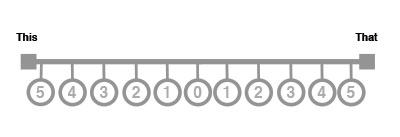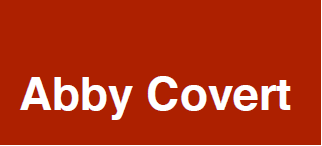This is the work.
The words, the discourse, the process, the journey you take from not knowing to knowing, the unique way that you choose to use your tools in your context — this is the work.
The person you become through proceeding along this journey is the person who can solve the problem you are trying to solve. The person you are before braving that journey is not quite ready yet. And that’s ok. You must proceed knowing that the journey is the work. And they don’t call it work for nothing. It can be messy, hairy, complicated, even seemingly impossible.
And a lot of that hard, messy work is actually behind the curtain. All these questions you have to answer, all these issues you have to work through that users will never even know about. But asking those questions and tackling those issues while still expecting and being prepared for a messy, complicated reality to work through is the work.
We use words daily to describe where we want to go and what we want when we get there. But so often when designing for other people, we lack non judgmental words to guide our work. Instead we use loaded spectrums of dichotomous language like good/bad, easy/hard and clean/cluttered. When often the inherent vagueness and rigidity of language like this works against us by the end. Leaving us with too many questions about how to judge the success of our own work.
Ok, so let’s say that <other student’s hero> writes a blog post about how he doesn’t like your work, what reasons might he give? What words might he use?
This was one of the hardest questions I have heard asked student to student in class this semester. While I witnessed it get asked, it actually took till the end of the exercise for me to realize the impact it had.
You don’t really think <hero name> might not be behind my work, right, I mean thats not why you asked that right?
It was after this reaction to the question after the exercise that I remembered the gravity of this kind of question. And it reminded me of the responsibility of being the asker. Because asking is easier than answering them. But on this journey from not knowing to knowing, answering and not ignoring or being perturbed by these questions is the work.
This week I asked my thesis students to explore what words they might use to express their intent. The post-it shown at the head of this article is one of my favorite responses from the other half of the exercise:
What words do you not want used to describe your work.
To help them to work through these language based conundrums, I taught them about performance continuums and how they can help us to explore what Dan Klyn refers to as “the yet” inherent in most design work. Performance continuums are a perfect tool for when we are asked to bring balance and order to differing perspectives in order to craft the right solution.

Continuums fundamentally change the conversation from “this vs that” to “how much this to remain in balance with that.”
These constructions of words may seem simple, but they can be used to build a solid foundation of agreement on which difficult decisions can be made and other work can be laid.
When applied in a real world design process, the words we put on the ends of these seemingly simple lines may very well change the way that people are directed to do their job, money that is spent or the way success is measured in an organization.
Deciding on the words we use to describe our intent is an amazing responsibility. Getting to agreement on those words is the work.
Thanks for reading.
